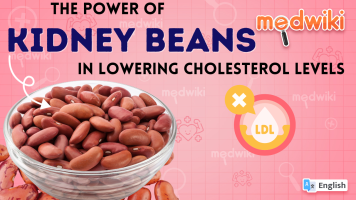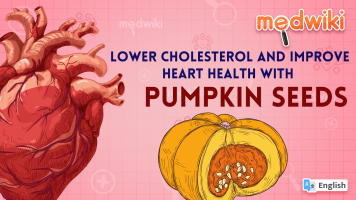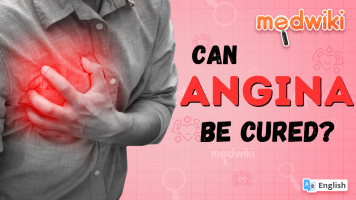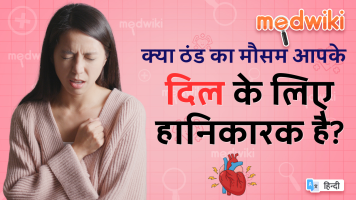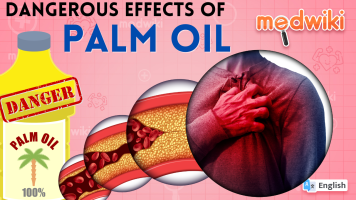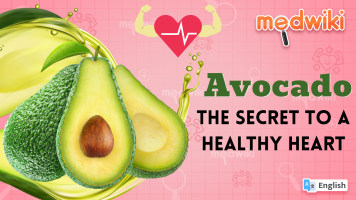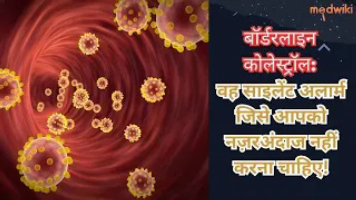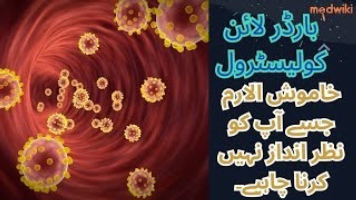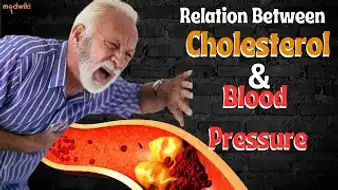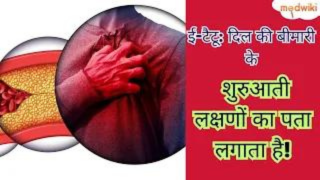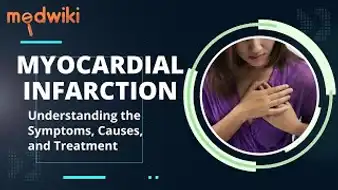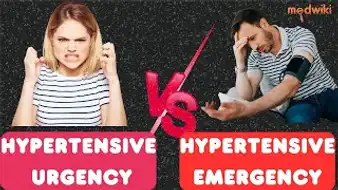What are some ways you incorporate kidney beans into your meals to enjoy their health benefits?The ways are:-Kidney Beans as a Superfood:Known as rajma, kidney beans are rich in protein, fiber, vitamins, and minerals, constituting a superfood with diverse health benefits.Cholesterol-Lowering Properties:High cholesterol levels increase the risk of heart disease and stroke.Kidney beans contain soluble fiber, proven to lower cholesterol by reducing absorption in the bloodstream.LDL Cholesterol Reduction:Kidney beans are particularly effective in lowering LDL cholesterol, the "bad" cholesterol.Lowering LDL cholesterol helps prevent plaque buildup in arteries, reducing the risk of heart disease and stroke.Weight Loss Support:Low in calories and high in fiber, kidney beans contribute to weight loss.Enhanced feelings of fullness lead to reduced calorie intake over time.Nutrient-Rich and Delicious:Kidney beans are a nutritious and tasty addition to your diet.Regular consumption can improve overall health and reduce the risk of heart-related conditions.Versatile Incorporation:Kidney beans can be easily incorporated into various dishes for a flavorful and health-promoting meal.Enjoy the benefits of this superfood by making it a regular part of your diet.Disclaimer:- This information is intended to supplement, not substitute, advice from your healthcare provider or doctor. It does not cover all possible uses, precautions, interactions, or side effects, and may not be appropriate for your specific healthcare needs. Always consult with your doctor or another qualified healthcare provider before modifying or discontinuing any prescribed portion of your healthcare plan or treatment, in order to determine the best course of therapy for you. Do not ignore or delay professional medical advice based on anything you have seen or read on Medwiki.Find us at:https://www.instagram.com/medwiki_/?h...https://twitter.com/medwiki_inchttps://www.facebook.com/medwiki.co.in/
How do the fiber, healthy fats, and antioxidants in pumpkin seeds contribute to lowering cholesterol and improving heart health?The Ways are:Pumpkin seeds are a tasty and nutritious snack that can help lower cholesterol and improve heart health. These tiny seeds are rich in fiber, healthy fats, and antioxidants, all of which are essential for maintaining a healthy heart.The fiber in pumpkin seeds helps to lower cholesterol levels by binding to bile acids in the gut and preventing them from being reabsorbed into the body. This forces the liver to produce more bile, which in turn uses up cholesterol to make more bile acids. As a result, the overall level of cholesterol in the body decreases.Pumpkin seeds are also high in unsaturated fats, which have been shown to reduce the risk of heart disease. Additionally, they contain antioxidants like vitamin E and selenium, which protect the heart from damage caused by free radicals.So if you're looking for a heart-healthy snack, try incorporating pumpkin seeds into your diet. Not only are they delicious, but they can also help keep your heart in top shape!Source:- https://www.healthline.com/nutrition/11-benefits-of-pumpkin-seeds#TOC_TITLE_HDR_6Disclaimer:- This information is intended to supplement, not substitute, advice from your healthcare provider or doctor. It does not cover all possible uses, precautions, interactions, or side effects, and may not be appropriate for your specific healthcare needs. Always consult with your doctor or another qualified healthcare provider before modifying or discontinuing any prescribed portion of your healthcare plan or treatment, in order to determine the best course of therapy for you. Do not ignore or delay professional medical advice based on anything you have seen or read on Medwiki.Find us at:https://www.instagram.com/medwiki_/?h...https://twitter.com/medwiki_inchttps://www.facebook.com/medwiki.co.in/
What are the key breakthrough treatments for angina, including medication, lifestyle changes, and surgical interventions, and how do these approaches contribute to managing the condition effectively?The ways are:-1. Angina Overview:Causes chest pain or discomfort due to reduced blood flow to the heart muscles.Chronic condition requiring effective management.2. Breakthrough Treatments:Latest treatments encompass medication, lifestyle changes, and, in severe cases, surgery.3. Medication - Nitroglycerin:Widely used to dilate blood vessels and enhance blood flow to the heart.4. Lifestyle Changes:Regular exercise, a healthy diet, and stress reduction are key components.Effective in managing angina symptoms.5. Surgical Interventions:Angioplasty or bypass surgery may be necessary in severe cases.Improves blood flow to the heart, reducing angina symptoms.6. Quality of Life Improvement:While no cure exists, breakthrough treatments significantly enhance the quality of life.7. Seeking Medical Attention:Important to consult a healthcare provider if experiencing chest pain or discomfort.Develop a personalized treatment plan for effective management.8. Share Your Experience:If you've undergone angina treatment, share your thoughts and experiences in the comments.Disclaimer:- This information is intended to supplement, not substitute, advice from your healthcare provider or doctor. It does not cover all possible uses, precautions, interactions, or side effects, and may not be appropriate for your specific healthcare needs. Always consult with your doctor or another qualified healthcare provider before modifying or discontinuing any prescribed portion of your healthcare plan or treatment, in order to determine the best course of therapy for you. Do not ignore or delay professional medical advice based on anything you have seen or read on Medwiki.Find us at:https://www.instagram.com/medwiki_/?h...https://twitter.com/medwiki_inchttps://www.facebook.com/medwiki.co.in/
1. जब ठंड होती है, तो हमारी blood vessels छोटी हो जाती हैं, जिससे heart के लिए blood पंप करना diificult हो जाता है। इससे हमारा blood pressure बढ़ता है और यहां तक कि खून के थक्के जमने से arteries block होती हैं, जिससे हृदय को काम करने में मुश्किल होती है।2. ठंड हमारे खून को भी गाढ़ा कर देती है, जिससे खून के थक्के जमने और दिल का दौरा पड़ने की संभावना बढ़ जाती है।3. sympathetic nervous system के activation के कारण ठंड का मौसम हमारे शरीर में stress हार्मोन release करता है। इससे heart's की rhythm बदल सकती है और irregular heartbeats और यहां तक कि अचानक कार्डियक अरेस्ट का खतरा बढ़ता है।4. यदि हमें बहुत अधिक ठंड लगती है, तो हमें हाइपोथर्मिया हो सकता है, जहां हमारा शरीर तेजी से गर्मी खो देता है। यह हृदय और रक्त वाहिकाओं को नुकसान पहुंचाता है।5. ठंड का मौसम हमारे behaviour को बदलता है। हम कम exercise करते हैं, ज़्यादा unhealthy foods खाते हैं, अधिक शराब पीते हैं, या अधिक धूम्रपान कर सकते हैं। ये आदतें heart attacks की संभावना को भी बढ़ाती हैं। source:-Winter heart attacks: Know why heart attacks are more common during winter season; tips to reduce your risk | The Times of India (indiatimes.com)Disclaimer:-This information is not a substitute for medical advice. Consult your healthcare provider before making any changes to your treatment.Do not ignore or delay professional medical advice based on anything you have seen or read on Medwiki.Find us at:https://www.instagram.com/medwiki_/?h...https://medwiki.co.in/https://twitter.com/medwiki_inchttps://www.facebook.com/medwiki.co.in/
Why is palm oil considered unhealthy, especially concerning cholesterol levels and potential risks to heart health?These follow are :-A comparison study between palm oil, olive oil, and coconut oil revealed that palm oil, when consumed, can elevate levels of "bad" cholesterol. This effect was particularly pronounced in healthy individuals.Variations in tocotrienol levels and saturated fats between fresh and aged palm oil can contribute to cholesterol buildup in arteries.Palm oil, containing approximately 34% saturated fat, notably palmitic acid from palm kernel oil, poses an increased risk of heart disease and other health issues upon consumption.Studies indicate that the presence of palmitic acid in palm oil can reduce mice's responsiveness to hormones like leptin and insulin, potentially increasing appetite and leading to overeating.Source:-https://indianexpress.com/article/lifestyle/health/palm-oil-what-is-it-should-you-consume-7276057/Disclaimer:-This information is not a substitute for medical advice. Consult your healthcare provider before making any changes to your treatment. Do not ignore or delay professional medical advice based on anything you have seen or read on Medwiki.Find us at:https://www.instagram.com/medwiki_/?h...https://twitter.com/medwiki_inchttps://www.facebook.com/medwiki.co.in/
Avocados are rich in vitamins, potassium, and fiber. They can also help lower cholesterol and blood pressure, making them a healthy addition to your diet.Some Benefits are:-Heart-Healthy Attributes:Avocados are a simple and delicious choice for promoting heart health.Rich in Monounsaturated Fats:Packed with heart-healthy monounsaturated fats.Potassium for Blood Pressure:A rich source of potassium, aiding in blood pressure regulation and reducing heart disease risk.High Fiber Content:High fiber content helps lower cholesterol levels, diminishing the risk of heart attack and stroke.Antioxidants protection:Contains antioxidants like lutein and zeaxanthin, safeguarding the heart from free radical damage.Vitamin E Benefits:Good source of vitamin E, which enhances circulation and reduces the risk of blood clots.Easy Incorporation into Diet:Include sliced avocado in morning toast or smoothies.Substitute mayonnaise with avocado in sandwiches.Use avocado oil in cooking or enjoy guacamole with veggies or whole-grain crackers.Conclusion:Avocados are a tasty and convenient way to support heart health, offering a variety of nutrients for overall well-being.Disclaimer:- This information is intended to supplement, not substitute, advice from your healthcare provider or doctor. It does not cover all possible uses, precautions, interactions, or side effects, and may not be appropriate for your specific healthcare needs. Always consult with your doctor or another qualified healthcare provider before modifying or discontinuing any prescribed portion of your healthcare plan or treatment, in order to determine the best course of therapy for you. Do not ignore or delay professional medical advice based on anything you have seen or read on Medwiki.Find us at:https://www.instagram.com/medwiki_/?h...https://twitter.com/medwiki_inchttps://www.facebook.com/medwiki.co.in/
क्या बॉर्डरलाइन कोलेस्ट्रॉल क्या है और इसके क्या कारण हो सकते हैं:कोलेस्ट्रॉल के कण: इसे रक्त में घूमते हुए छोटे कणों के रूप में देखा जा सकता है, जो रक्त वाहिकाओं की दीवारों से चिपक सकते हैं।बॉर्डरलाइन कोलेस्ट्रॉल: यह होता है जब कोलेस्ट्रॉल की मात्रा थोड़ी अधिक होती है, लेकिन बहुत अधिक नहीं। इससे रक्त वाहिकाओं को नुकसान हो सकता है।कारण: बड़े संख्याओं में कोलेस्ट्रॉल के कण चिपक सकते हैं और ""प्लाक"" नामक चीज़ को उत्पन्न कर सकते हैं, जिससे रक्त वाहिकाओं की सड़कों में गंदगी जमा हो सकती है।संकेत: बॉर्डरलाइन कोलेस्ट्रॉल को नज़रअंदाज़ करना धीरे-धीरे से दिल की समस्याओं का कारण बन सकता है, इसलिए सबसे अच्छा है नियमित जांच करवाना।जांच: सीमावर्ती कोलेस्ट्रॉल का स्तर 200 और 239 mg/dl के बीच होना चाहिए। आवश्यक होने पर, डॉक्टर से सलाह लेकर जीवनशैली में बदलाव करें।उपाय: स्वस्थ भोजन, अधिक व्यायाम, और आवश्यक होने पर दवा का सही उपयोग करके स्वस्थ कोलेस्ट्रॉल स्तर को बनाए रखें।Source:-https://www.sugarfit.com/blog/borderline-cholesterol/Disclaimer:-This information is not a substitute for medical advice. Consult your healthcare provider before making any changes to your treatment. Do not ignore or delay professional medical advice based on anything you have seen or read on Medwiki.Find us at:https://www.instagram.com/medwiki_/?h...https://twitter.com/medwiki_inchttps://www.facebook.com/medwiki.co.in/
بارڈر لائن کولیسٹرول، جیسے ہمیں ذرا سی حرارت محسوس ہوتی ہے، ایک ناپسندیدہ حالت ہے جب کولیسٹرول کی مقدار زیادہ ہوتی ہے لیکن بہت زیادہ نہیں۔بارڈر لائن کولیسٹرول کی وجہ سے خون کی ویسلز پر چپکائی ہو سکتی ہے، جو دل کے مسائل یا دماغی خرابیوں کا سبب بن سکتی ہے۔اسے نظرانداز کرنا ایک خطرناک عمل ہوسکتا ہے، جو دل کے دورے یا دماغ کی خرابیوں تک پہنچ سکتا ہے۔بارڈر لائن کولیسٹرول کو جانچنے کے لئے خون کا ٹیسٹ کروانا ضروری ہوتا ہے۔کولیسٹرول کی سطح برقرار رکھنے کے لئے صحت مند غذائیں کھانا، ورزش کرنا، اور ضرورت پڑنے پر دوائیں استعمال کرنا ضروری ہوتا ہے۔بارڈر لائن کولیسٹرول کو بڑی مسئلہ نہیں سمجھا جاتا، لیکن یہ آپ کے جسم کا طریقہ ہے کہ ""یار، چلو چیزوں کی دیکھ بھال کریں پہلے ان باتوں کو بڑھنے سے پہلے!Source:-Prioritize professional medical advice. Don't delay based on Medwiki info. Visit: medwiki.coDisclaimer:-This information is not a substitute for medical advice. Consult your healthcare provider before making any changes to your treatment. Do not ignore or delay professional medical advice based on anything you have seen or read on Medwiki.Find us at:https://www.instagram.com/medwiki_/?h...https://twitter.com/medwiki_inchttps://www.facebook.com/medwiki.co.in/
What are some lifestyle changes that can help maintain healthy blood pressure?These some are:-Cholesterol Overview:Cholesterol is a waxy substance with both beneficial and detrimental aspects for the body's health.Dual Nature of Cholesterol:While the body needs cholesterol for cell and hormone production, excessive amounts, especially the "bad" kind, can be problematic.Cholesterol Production from Diet:Foods high in saturated and trans fats contribute to cholesterol production in the body.Formation of Plaques:Excessive cholesterol can lead to the formation of plaques in arteries, narrowing and hardening them.Arterial Restriction and Blood Flow:Plaque buildup restricts blood flow in arteries, similar to a clogged pipe.Impact on Blood Pressure:Narrow and stiff arteries create resistance to blood flow, requiring the heart to pump harder.Analogy of Heart and Blood Vessels:The heart acts as a pump, and blood vessels are compared to a network of roads.Increased Pumping Strain:Elevated resistance due to cholesterol buildup requires the heart to pump with more force.Consequence: High Blood Pressure (Hypertension):High blood pressure puts extra strain on the heart, increasing the risk of heart disease, stroke, and kidney issues.Maintenance of Healthy Blood Pressure:Adopting a heart-healthy diet, engaging in regular exercise, maintaining a healthy weight, and avoiding smoking contribute to managing blood pressure effectively.Disclaimer:- This information is intended to supplement, not substitute, advice from your healthcare provider or doctor. It does not cover all possible uses, precautions, interactions, or side effects, and may not be appropriate for your specific healthcare needs. Always consult with your doctor or another qualified healthcare provider before modifying or discontinuing any prescribed portion of your healthcare plan or treatment, in order to determine the best course of therapy for you. Do not ignore or delay professional medical advice based on anything you have seen or read on Medwiki.Find us at:https://www.instagram.com/medwiki_/?h…https://twitter.com/medwiki_inchttps://www.facebook.com/medwiki.co.in/
What specific mechanisms, such as reducing oxidative stress, inflammation, regulating blood pressure, and improving cholesterol levels, make grapes a beneficial dietary choice for lowering the risk of heart disease?Benefits of Eating Grapes for Heart Health:-Rich in Antioxidants:Grapes contain polyphenol antioxidants that protect the heart by preventing cellular damage.Effective in reducing oxidative stress and inflammation, key risk factors for heart disease.Blood Pressure Regulation:Studies suggest that grapes can help lower blood pressure.Polyphenols in grapes contribute to the relaxation of blood vessels, facilitating improved blood flow.Cholesterol Improvement:Grapes may positively impact cholesterol levels.Reduction in LDL cholesterol (the "bad" cholesterol) and an increase in HDL cholesterol (the "good" cholesterol) have been observed.Dietary Recommendation:-Simple Addition to Diet:Including grapes in your diet is an easy and enjoyable way to support heart health.Tasty and Healthful:A delicious means to make dietary changes that contribute to a lower risk of heart disease.
What are the best Yoga Poses To maintain Blood Pressure:-Mountain Pose (Tadasana): Stand tall with feet hip-width apart, toes forward. Relax arms by sides, roll shoulders back. Lengthen spine, breathe deeply. Feel grounded and steady like a mountain.Forward Fold (Uttanasana): Exhale and fold forward from Mountain Pose, keeping knees slightly bent. Allow upper body to hang, hands on floor or elbows. Relax head and neck. Breathe deeply and feel leg stretch.Bridge Pose (Setu Bandhasana): Lie on your back with bent knees and feet flat. Place your arms by your sides, palms down. Inhale, press feet into the floor, and lift hips. Roll shoulders under and interlace fingers, pressing arms down. Breathe steadily and feel the stretch in chest, shoulders, and thighs.Seated Forward Bend (Paschimottanasana): Sit with legs extended. Inhale, lengthen spine, exhale and fold forward from hips. Reach hands towards feet or use strap. Relax head, neck, and shoulders. Breathe deeply and feel the stretch in back and hamstrings.Legs-Up-the-Wall Pose (Viparita Karani): Lie sideways next to a wall and raise your legs onto it. Keep your arms relaxed, with palms facing up, and rest your head on a pillow. Close your eyes and take slow, deep breaths. This pose promotes relaxation and can lower your blood pressure.Remember, consistency and patience are key when practicing yoga. Start with gentle movements and gradually increase intensity and duration over time. Enjoy your yoga journey!Disclaimer:- This information is intended to supplement, not substitute, advice from your healthcare provider or doctor. It does not cover all possible uses, precautions, interactions, or side effects, and may not be appropriate for your specific healthcare needs. Always consult with your doctor or another qualified healthcare provider before modifying or discontinuing any prescribed portion of your healthcare plan or treatment, in order to determine the best course of therapy for you. Do not ignore or delay professional medical advice based on anything you have seen or read on Medwiki.Find us at:https://www.instagram.com/medwiki_/?h...https://twitter.com/medwiki_inchttps://www.facebook.com/medwiki.co.in/
What are effective treatments for managing panic attacks?These follow are:-Genetics: Panic disorder has a familial tendency, indicating a genetic influence.Brain chemistry: Imbalances in neurotransmitters like serotonin and norepinephrine play a role in the development of panic disorder.Environmental factors: Traumatic events, chronic stress, and other environmental factors can trigger panic attacks.If you've experienced a panic attack, seeking help from a mental health professional is crucial.Effective treatments, such as cognitive-behavioral therapy (CBT) and medication, are available.It's important to know you're not alone and that reaching out for help can provide coping strategies and help regain control over your life.Disclaimer:- This information is intended to supplement, not substitute, advice from your healthcare provider or doctor. It does not cover all possible uses, precautions, interactions, or side effects, and may not be appropriate for your specific healthcare needs. Always consult with your doctor or another qualified healthcare provider before modifying or discontinuing any prescribed portion of your healthcare plan or treatment, in order to determine the best course of therapy for you. Do not ignore or delay professional medical advice based on anything you have seen or read on Medwiki.Find us at:https://www.instagram.com/medwiki_/?h…https://twitter.com/medwiki_inchttps://www.facebook.com/medwiki.co.in/
ایک تحقیق نے 400,000 سے زیادہ بالغوں پر کی گئی اور اظہار کیا کہ جن لوگوں نے اپنے کھانے میں زیادہ نمک شامل کیا، ان میں ٹائپ 2 ذیابیطس کا خطرہ بڑھ جاتا ہے۔زیادہ نمک کا استعمال موٹاپے کا باعث بن سکتا ہے، جو کہ ٹائپ 2 ذیابیطس کا امکان بڑھا دیتا ہے۔نمکین غذائیں کھانے سے ہم مجموعی طور پر زیادہ کھاتے ہیں، جس سے زیادہ کیلوریز کا استعمال ہوتا ہے اور وزن بڑھتا ہے، جو ذیابیطس کے خطرے کو بڑھا دیتا ہے۔زیادہ نمک کا استعمال جسم میں سوزش کا باعث بن سکتا ہے، جو عام میٹابولک عمل میں خلل پیدا کرتا ہے اور انسولین کے خلاف مزاحمت پیدا کرتا ہے، جو ٹائپ 2 ذیابیطس کا امکان بڑھا دیتا ہے۔Source:-https://www.futurity.org/salt-type-2-diabetes-2993952/?utm_source=rss&utm_medium=rss&utm_campaign=salt-type-2-diabetes-2993952Disclaimer:-This information is not a substitute for medical advice. Consult your healthcare provider before making any changes to your treatment. Do not ignore or delay professional medical advice based on anything you have seen or read on Medwiki.Find us at:https://www.instagram.com/medwiki_/?h...https://twitter.com/medwiki_inchttps://www.facebook.com/medwiki.co.in/
क्या एक ऐसा इलेक्ट्रॉनिक टैटू, जो हृदय रोग के शुरुआती लक्षणों का पता लगा सकता है और नैदानिक सेटिंग्स के बाहर आपके हृदय स्वास्थ्य की निगरानी कर सकता है:एक नई तकनीक के तहत डिज़ाइन किए गए पहनने योग्य इलेक्ट्रॉनिक टैटू का विचार किया जा रहा है जो हृदय रोग के शुरुआती लक्षणों को निगरानी कर सकता है।इस टैटू में एक हल्का, अल्ट्राथिन, और वायरलेस डिवाइस शामिल है जो इसे उपयोगकर्ता के लिए आरामदायक बनाता है।इस इलेक्ट्रॉनिक टैटू में हृदय से विद्युत संकेत और हृदय वाल्व से ध्वनिक संकेत को मापने के लिए डिज़ाइन किया गया है।यह डिवाइस हृदय की पूरी तस्वीर प्रदान करती है और हृदय समय अंतराल को मापने में मदद करती है, जिससे हृदय रोग का संकेत मिल सकता है।इस इलेक्ट्रॉनिक टैटू का उपयोग करके हृदय रोगों की शुरुआती पहचान और निदान में शीघ्रता और सटीकता में सुधार किया जा सकता है।Source:-https://www.futurity.org/electronic-tattoo-heart-disease-2911742/Disclaimer:-This information is not a substitute for medical advice. Consult your healthcare provider before making any changes to your treatment. Do not ignore or delay professional medical advice based on anything you have seen or read on Medwiki.Find us at:https://www.instagram.com/medwiki_/?h...https://twitter.com/medwiki_inchttps://www.facebook.com/medwiki.co.in/
What lifestyle changes do you think are most effective in reducing the risk of heart attacks?These follow are:Myocardial Infarction Overview:Also known as a heart attack, it's a severe medical emergency.Occurs when blood flow to the heart is blocked, leading to heart muscle damage or death.Causes of Heart Attack:Blockage due to fatty deposits, blood clots, or coronary artery spasms can impede blood flow.Lack of blood and oxygen can result in permanent heart muscle damage, leading to complications like heart failure.Recognizing Symptoms:Common symptoms include chest pain, shortness of breath, nausea, vomiting, and sweating.Atypical symptoms may include jaw pain, back pain, or stomach pain.Anxiety, fatigue, or a sense of impending doom can also precede a heart attack.Risk Factors:Age, family history, smoking, high blood pressure, high cholesterol, obesity, and diabetes are key risk factors.Lifestyle changes and medical intervention are essential for addressing these factors.Treatment Approach:Swift restoration of blood flow is crucial for heart attack treatment.Procedures like angioplasty, stenting, coronary artery bypass grafting, or prescribed medications are common interventions.Seeking Immediate Help:If symptoms manifest, call for emergency medical services promptly.Early intervention is vital for saving lives and preventing long-term complications.Atypical Symptoms and Silent Heart Attacks:Some people may experience atypical symptoms like anxiety or fatigue before a heart attack.Silent heart attacks, with no apparent symptoms, underscore the importance of regular medical check-ups.Preventive Measures:Lifestyle changes and medical intervention reduce the risk of a heart attack.Prioritize heart health for overall well-being and longevity.Disclaimer:- This information is intended to supplement, not substitute, advice from your healthcare provider or doctor. It does not cover all possible uses, precautions, interactions, or side effects, and may not be appropriate for your specific healthcare needs. Always consult with your doctor or another qualified healthcare provider before modifying or discontinuing any prescribed portion of your healthcare plan or treatment, in order to determine the best course of therapy for you. Do not ignore or delay professional medical advice based on anything you have seen or read on Medwiki.Find us at:https://www.instagram.com/medwiki_/?h…https://twitter.com/medwiki_inchttps://www.facebook.com/medwiki.co.in/
How can individuals distinguish between hypertensive urgency and hypertensive emergency, and what steps should they take if they suspect they are experiencing either condition?Hypertensive Urgency:Definition: Significant blood pressure rise without immediate health danger.Diagnosis: Systolic BP > 180 mm Hg or diastolic BP > 110 mm Hg.Symptoms: May include severe headache, shortness of breath, nosebleeds, and anxiety.Detection: Often discovered during routine medical check-ups, with some experiencing no symptoms.Treatment: Involves blood pressure-lowering medications, lifestyle changes (exercise, low-sodium diet).Follow-up: Patients advised to monitor BP, follow up with healthcare provider.Hypertensive Emergency:Definition: Severe, life-threatening condition requiring immediate medical attention.Diagnosis: BP > 180/120 mm Hg with accompanying symptoms (chest pain, shortness of breath, severe headache, seizures, confusion, loss of consciousness).Risks: Potential damage to vital organs (brain, heart, kidneys) leading to stroke, heart attack, or kidney failure if untreated.Treatment: Requires hospitalization, intravenous medications to lower BP, and ICU monitoring.Prevention: Urgent medical attention crucial to prevent complications.Conclusion:High Blood Pressure Types: Urgency (non-immediate harm) and Emergency (severe, immediate danger).Importance: Monitor symptoms, seek medical attention for emergencies, and follow up with healthcare providers for proper blood pressure management.Disclaimer:- This information is intended to supplement, not substitute, advice from your healthcare provider or doctor. It does not cover all possible uses, precautions, interactions, or side effects, and may not be appropriate for your specific healthcare needs. Always consult with your doctor or another qualified healthcare provider before modifying or discontinuing any prescribed portion of your healthcare plan or treatment, in order to determine the best course of therapy for you. Do not ignore or delay professional medical advice based on anything you have seen or read on Medwiki.Find us at:https://www.instagram.com/medwiki_/?h...https://twitter.com/medwiki_inchttps://www.facebook.com/medwiki.co.in/


